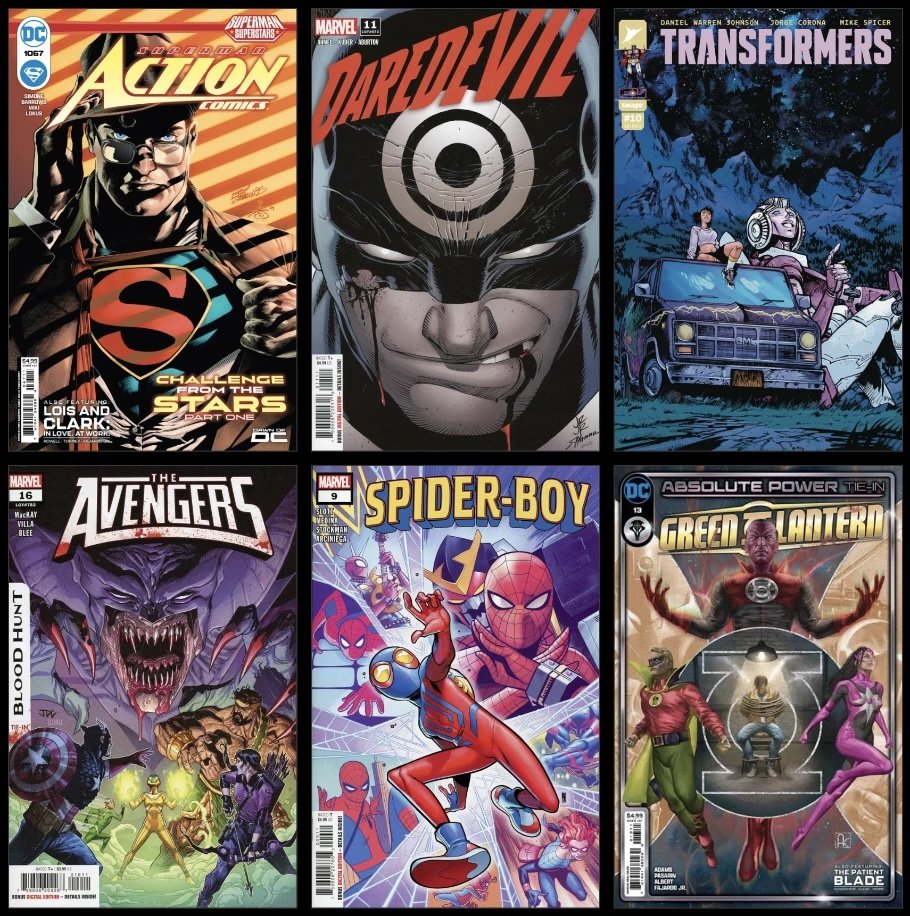Collecting Comic Books 101: A Beginner’s Guide
Starting a comic book collection can be an exciting and rewarding hobby, whether you’re drawn to the art, the storytelling, or the potential investment value. Here’s a simple guide to help you get started:
1. Define Your Collection Focus
Comic books come in a wide variety of genres, eras, and formats. Narrowing down your focus will help you build a collection that you’re passionate about. Some categories to consider:
Superheroes: Titles like Spider-Man, Batman, and X-Men.
Genres: Horror, sci-fi, fantasy, crime, etc.
Publishers: Marvel, DC, Image Comics, Dark Horse, or indie publishers.
Artists/Creators: Collect works by a specific artist or writer (e.g., Jack Kirby, Todd McFarlane).
Key Issues: First appearances of characters, key story arcs, or variant covers.
2. Learn the Comic Book Grades
Comic books are graded based on their condition, which greatly affects their value. Here’s a basic breakdown:
Mint (9.8-10.0): Near-perfect condition with no noticeable flaws.
Near Mint (9.4-9.8): Almost perfect, with very slight wear.
Very Fine (7.0-9.0): Minor wear, but overall in great condition.
Fine (5.0-7.0): Some wear and minor defects but still highly collectible.
Good (2.0-5.0): Noticeable wear and creases.
Poor (0.5-2.0): Very worn, with major defects.
3. Start with Affordable Issues
You don’t need to go straight for high-value comics. Start by purchasing affordable issues or modern comics. Look for:
Reprints: Affordable versions of key issues (e.g., Marvel Masterworks, DC Essentials).
Trades and Omnibuses: Collected editions of story arcs in one volume.
New Releases: Modern comics are often easier to find and cheaper.
4. Understanding Comic Book Formats
Comics come in various formats, each with its unique features:
Single Issues: Standard comic book format, typically 20-30 pages.
Trade Paperbacks (TPBs): Collected volumes of story arcs from multiple issues.
Hardcovers/Omnibuses: Larger volumes that collect a series or story arc in hardcover format.
Variants: Limited edition covers that may have different art or features from the regular issue.
5. Know Where to Buy
There are various ways to start building your collection:
Local Comic Shops (LCS): The best place for new releases, back issues, and community knowledge.
Conventions: Comic cons often have dealers selling rare or vintage comics.
Online: Websites like eBay, Craigslist, and specialty stores offer a wide selection, but be mindful of condition and pricing.
Auction Houses: There are various auctioneers and auction houses, head over here to check out some our partners.
Direct from Publishers: Some publishers sell limited editions or exclusive variants directly to collectors.
Here’s a detailed article of what to consider when making your purchase decisions
6. Protect and Store Your Comics
Preserving the condition of your comics is crucial, especially for investment value:
Bags and Boards: Plastic sleeves (bags) and stiff backing boards protect comics from bending and environmental damage.
Long Boxes: Special boxes designed for comic storage, holding hundreds of comics in a safe and organized manner.
Climate Control: Store comics in a cool, dry place away from direct sunlight to prevent fading and deterioration.
For more of a detailed breakdown head over to our Preservation and Restoration article.
7. Hunting for Key Issues
Once you’re comfortable, consider seeking out valuable key issues:
First Appearances: Iconic characters or villains (e.g., Amazing Fantasy #15 for Spider-Man).
Significant Events: Comics that mark major story developments (e.g., The Death of Superman).
Rare Variants: Limited-run variant covers can be highly sought after by collectors.
8. Follow Market Trends
The value of comic books can fluctuate based on media adaptations, character popularity, and nostalgia. Keep an eye on upcoming movies, TV shows, or anniversaries that may impact the demand for certain issues.
9. Join Collecting Communities
Being part of a collecting community can enhance your experience. You can trade comics, learn from seasoned collectors, and attend local or online events. Consider:
Online Forums: Places like Reddit’s r/comicbooks or CGC forums.
Social Media Groups: Facebook or Instagram comic collector groups.
Comic Conventions: Great for networking and finding rare issues.
10. Enjoy the Process
Remember that collecting comics should be enjoyable, whether you’re in it for the investment or the love of the medium. Your collection reflects your personal interests and passions, so take your time and enjoy building it.
If you’re thinking about investing, starting small and growing your collection over time can also be a strategy, focusing on both passion and value!







